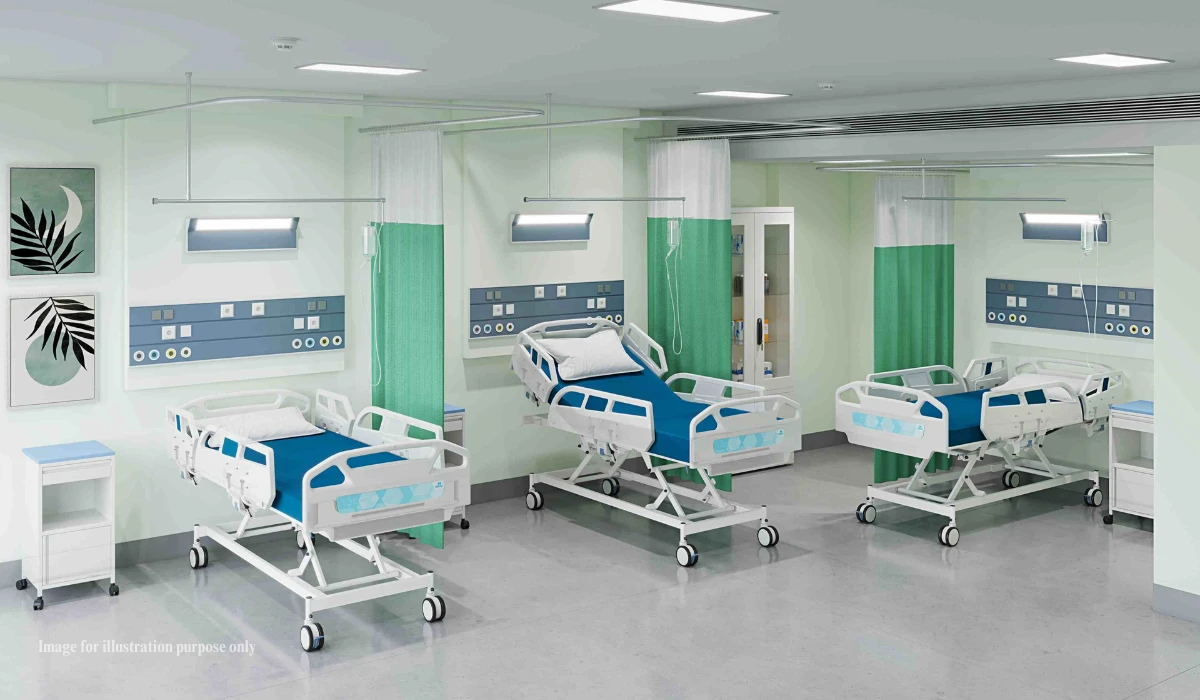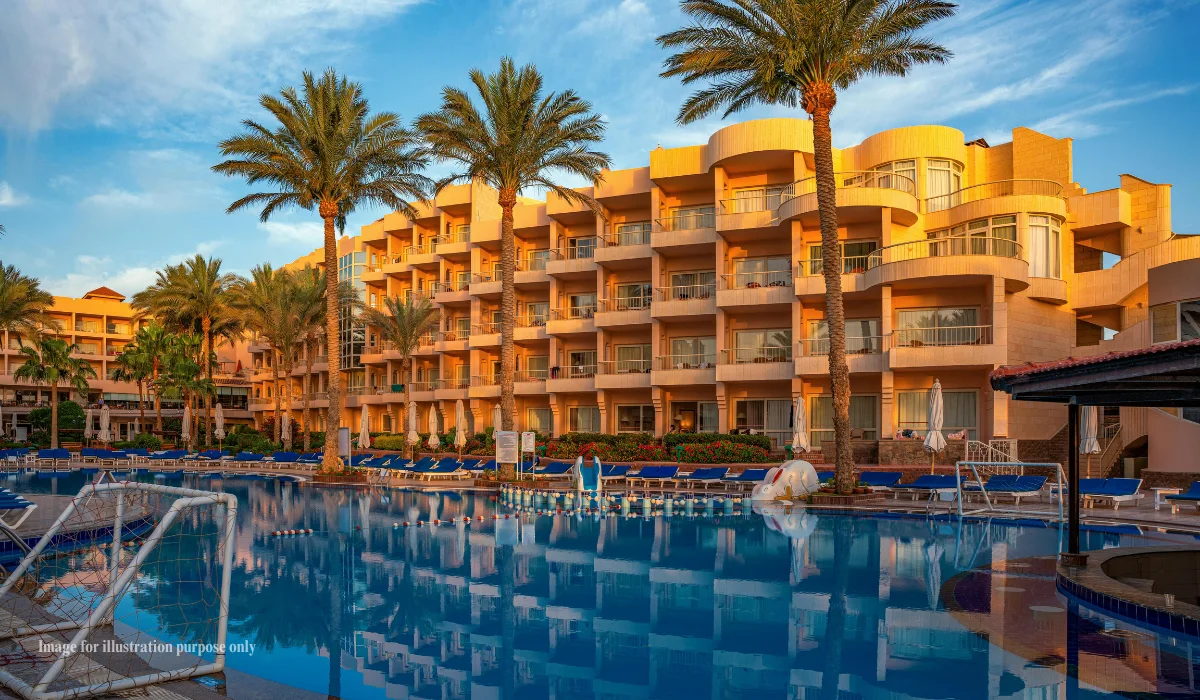The Boat Club Apartments have redefined the notion of high-end apartment living by seamlessly blending the interconnectedness of communal living with the privacy and opulence reminiscent of independent villas. Designed by SJK Architects, this apartment not only offers residents exclusive duplex apartments with their own private entries but also creates a harmonious balance between socializing and solitude. From its sun-filled atrium and Vastu Shastra-inspired spatial planning to its inviting daylight, thermal comfort features, and restrained yet exquisite material palette, the Boat Club Apartments redefine the boundaries of upscale living.
One of the ways in which space-starved cities today can cater to rising populations while tackling ever-increasing land costs, is multi-storeyed apartment living. However, at Boat Club Road in the teeming metropolis of Chennai, India, this building type hasn’t quite caught on; the affluent, residential neighbourhood, colloquially called “Billionaires’ Row,” continues to be characterised by swanky, independent, villas.
With the Boat Club Apartments, SJK Architects set a new precedent for residential design in the locality. The building, standing on a 10,000-square-feet trapezoidal corner plot, offers four 4-BHK, duplex apartments ranging from 3500 sq ft to 4500 sq ft, each with its own private entry on separate levels.
The apartments provide naturally-lit and ventilated spaces that provide residents a sense of privacy along with the opportunity to socialise and connect with nature.
Balancing Connection and Privacy – Villas in the Sky
The design of the apartments unites the communal aspect of apartment living with the private nature of independently-owned villas.
The building is a five-storeyed structure with stilt parking at the lowermost level and four duplex apartments on the floors above. The apartment units are arranged in an interlocked manner around a common central core, such that each level houses two residential units, and yet, every duplex is accessed from a personalised entry on separate floors, creating villas in the sky.
The central core is a sun-filled atrium, comprising an elevator and a staircase with deep slabs for landings at all levels. It becomes the public heart of the building, encouraging the residents to soak in natural light, exercise their knees, and commune with neighbours and visitors. Unlike most luxury apartment buildings in India today where separate vertical cores are provided for supporting staff – the country still remains deeply divided on socio-economic lines – the architects have consciously chosen to allow all vertical movement to happen through a common central core to encourage a more inclusive way of living.

Using Vastu Shastra to Aid Spatial Planning
The layouts of these 4-BHK duplex units have been designed keeping in mind the principles of Vastu Shastra, a traditional Hindu system of architecture based on ancient wisdom, which many Hindus believe attracts positive cosmic energy. A stringent requirement from the building owner, this guided the placement and orientation of different spaces: the master bedrooms are located on the southwest and the kitchens on the northwest and southeast across all units, and all other spaces swivel around it. Further, all entry doors have been oriented towards the north, and the beds have been positioned in the east-west direction.
Inviting Daylight and Enabling Thermal Comfort
The intensity of Chennai’s heat, humidity and rain is difficult to reign in with high-performance windows and sealants. As a result, transitional spaces between the indoors and the outdoors are essential to temper the extreme weather conditions, while bringing in natural light and fresh air.
In the traditional coastal homes of Chennai, people would spend their days in spaces that lie somewhere between the inside and the outside – the ‘in-between’. These include internal courtyards, and semi-open spaces shaded by large sloping overhangs, the most conspicuous of which is the aangan or verandah. At the Boat Club Apartments building, the courtyard has been translated into a mechanically ventilated central atrium, horizontal projections into chajjas (overhangs), and verandahs into balconies.


The balconies connect the residents with the magnificent view of the surrounding raintrees, and allow in pleasant coastal winds. While builders in the region typically provide only a small, 4-feet-deep balcony as permitted by Chennai’s development control rules, the architects have carved an additional depth of 4 feet for the balconies out of each room. The resulting 8-feet-deep balconies can easily accommodate a chair and a table, allowing people to sit, relax and enjoy the view.
The balcony windows are designed as a combination of openable teakwood shutters and fixed glazing to allow the entry of light and wind while preventing dust. In addition, strategically placed, recessed casement windows in rooms and double-height stairwells within each duplex unit ensure cross-ventilation, thus offering respite from humidity. The doors and windows are also installed with pleated, side-slide mosquito meshes and mesh shutters to keep insects out.
On the facade, projections and recesses repeat at alternate levels, generating a playful exterior that engages with the streets around it.
The facade is covered in a dry stone cladding of Sadarhalli Grey Granite, which insulates the building thermally by creating a 40 mm wide air gap, leading to a temperature drop of at least four degrees celsius between the outside and the inside.


Restrained Material Palette to Exude Luxury
At the Boat Club Apartments building, luxury is expressed through a minimal aesthetic, comprising a limited selection of meticulously-finished materials.
Sadarhalli Grey Granite is applied in various finishes in both interior and exterior spaces, pushing boundaries in the application of a single material. The stone has been used in its honed avatar on floors, in fluted finish on the atrium and the boundary walls, and in flamed finish as dry wall cladding on the external facade. The external envelope is bathed in whites and greys of the stone, and browns of the timber, and finished with precision and finesse.

Also Read : The Nita Mukesh Ambani Cultural Centre (NMACC), Mumbai, India (biltrax.com)
SJK Architects
Email: design@sjkarchitect.com
Photography Credits: Niveditaa Gupta
Note: The text description is provided by the architecture/interior design firm.

Biltrax Construction Data is tracking 25,000+ projects on their technology platform for their clients.
Get exclusive access to upcoming projects in India with actionable insights and gain a competitive advantage for your products in the Indian Construction Market.
Visit www.biltrax.com or email us at contact@biltrax.com to become a subscriber and generate leads.
Disclaimer: The information contained herein has been compiled or arrived at, based upon information obtained in good faith from sources believed to be reliable. All such information and opinions can be subject to change. The image featured in this article is for representation purposes only and does not in any way represent the project. If you wish the article to be removed or edited, please email editor@biltrax.com.
Discover more from Biltrax Media, A Biltrax Group venture
Subscribe to get the latest posts sent to your email.






















